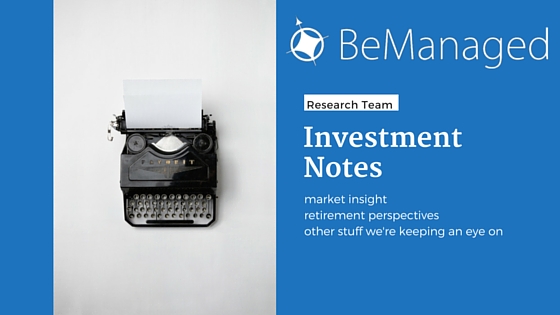The Incredible, Levitating S&P 500

April 2016 - The Incredible, Levitating S&P 500
After a rough start to the year, the S&P 500 rebounded in March erasing prior losses and turning in a 1.3% gain in the first quarter. As you see below this measure of stock market returns has increased 11% during last three and five year periods, significantly outpacing stock markets around the world.
Long-Term Market Returns
(Periods Ending March 31, 2016)
S&P 500
Three Years......................... 11.82%
Five Years............................ 11.58%
Since Jan.1, 2000................. 4.08%
Are we witnessing such robust economic growth that S&P 500 stocks were underpriced and are just catching up? Or are we seeing continued asset price inflation brought on by Federal Reserve money printing and corporate share buybacks? Let’s look at the details over the last three years (information gathered from Standard and Poor’s):
S&P 500 Sales Per Share
Sales are the long-term driver of corporate earnings and dividends. In 2015, sales per share for the composite S&P 500 companies totaled $1,127.13. Three years ago, sales per share were $1,092.37. That translates into a compound annual growth rate of just 1.05%. No support for 11% gains in stocks from here.
S&P 500 Earnings Per Share
As reported earnings per share came in at $86.48 in 2015, representing a slight decline from the $86.51 per share experienced in 2012. No growth in earnings certainly does not support 11% increases in stock prices.
S&P 500 Dividends Per Share
Companies paid out 50%, or $43.39 of their earnings per share in the form of dividends in 2015. For 2012, they paid out just $31.25, or 36% of their earnings. The three-year compound dividend growth rate of 11.6% could be a good explanation for the gains in the market from 2012.
We think the real story driving the market is the amount of money these companies are using to buy back their shares to support stock prices. The math is simple – if you have the same dollar amount of earnings (the numerator) but fewer shares outstanding (the denominator), you get to report higher earnings per share. Here is some interesting data from the Factset Buyback Quarterly1:
- S&P 500 companies bought back $568.9 billion dollars of stock in the calendar year 2015, representing 68.1% of net income
- Buybacks have to come from the free cash flow companies generated (or from money borrowed). The dollar amount spent on buybacks represents 101.7% of free cash flow – in other words, all the “excess” money went to propping up earnings per share instead of reinvestment in the company
1 http://www.factset.com/websitefiles/PDFs/buyback/buyback_3.17.16
Long-Term Market Returns (Periods Ending March 31, 2016)
Aggressive Index
(100% market risk)
Three Years....6.88%
Five Years....6.95%
Since Jan.1, 2000....5.47%
Moderately Aggressive Index
(80% market risk)
Three Years....5.97%
Five Years....6.26%
Since Jan.1, 2000....5.48%
Moderate Index
(100% market risk)
Three Years....5.12%
Five Years....5.67%
Since Jan.1, 2000....5.51%
Moderately Conservative Index
(40% market risk)
Three Years....3.94%
Five Years....4.73%
Since Jan.1, 2000....5.34%
Conservative Index
(20% market risk)
Three Years....2.25%
Five Years....3.30%
Since Jan.1, 2000....5.23%
- Dow Jones Relative Risk Indices are total portfolio indices that allow investors to evaluate the returns on their portfolios considering the amount of risk they have taken.
Download the Newsletter
April 2016
